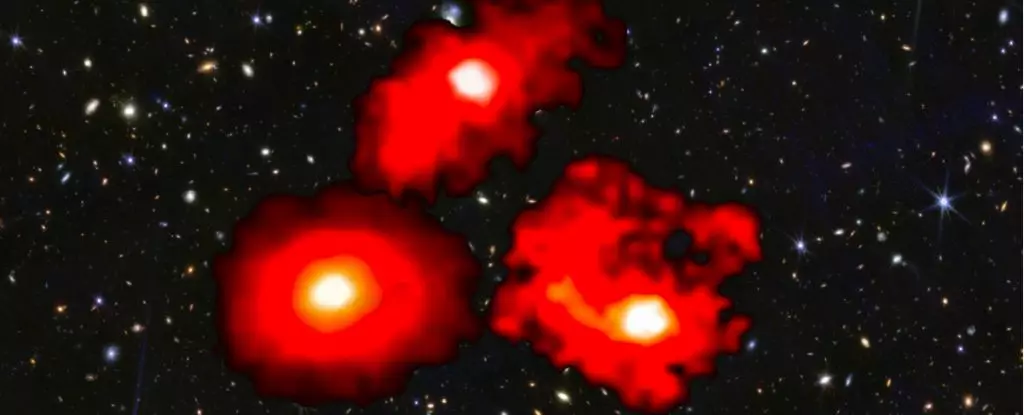Astrophysics is often a battleground for ideas, where theories about the cosmos are continuously tested against the relentless scrutiny of observations. In a recent revelation, astronomers have identified a set of remarkable galaxies, referred to as the ‘red monsters’, that baffle our traditional understanding of galaxy formation in the early Universe. The sheer size of these galaxies, comparable to our own Milky Way, is surprising, especially considering their presence just a billion years after the Big Bang.
Ivo Labbé, an esteemed astronomer from Swinburne University, articulated the astonishment felt across the scientific community. He effectively likened the situation to spotting a 100-kilogram toddler, underscoring the implausibility of such colossal entities forming so swiftly in the infancy of the Universe. This discovery raises critical questions about the established timelines and processes governing the formation of cosmic structures.
The dawn of the James Webb Space Telescope (JWST) has revolutionized our ability to explore remote cosmic epochs. Where previous instruments faltered, JWST excels, enabling astronomers to peer deeper into the fabric of spacetime. Photons from the early Universe, once not reachable, have become accessible, shining light on a period dubbed the Cosmic Dawn. This epoch, the first billion years post-Big Bang, offers a tantalizing glimpse into the burgeoning universe, yet much of it remains shrouded in mystery.
Before JWST, considerable theories existed regarding how galaxies developed from primordial gas and dark matter. Most models suggested a gradual accumulation of mass, following a slow and deliberate process. However, the observations made through JWST contradicted these notions when vast, seemingly overgrown galaxies emerged from the shadows of time. Astronomers have theorized possible explanations for their unexpected sizes, including bright emissions from the central black holes that could amplify their perceived mass.
In an extensive study facilitated by JWST’s FRESCO program, researchers focused on accurately measuring the distance and mass of galaxies within the universe’s infancy. Among numerous galaxies observed, three colossal entities stood out as statistical anomalies. These findings don’t directly refute the existing cosmological models but push the boundaries of our understanding regarding baryonic matter’s role in galaxy construction.
It becomes crucial to explore how these red monsters could achieve such formidable dimensions in a universe that was presumed to grow at a more sluggish pace. The evidence implies that these galaxies are of such considerable mass that their star formation rates are significantly heightened, possibly converting baryonic matter into stars at rates two to three times faster than any galaxies examined in more current cosmic epochs.
The extraordinary rate of star formation hinted at by the observations challenges traditional models. Generally, a galaxy undergoing intense activity incurs substantial “feedback” — dynamic forces that expel star-forming materials away, often stymying the birth of new stars. Current theories, therefore, raise eyebrows when faced with this evidence suggesting an early and vigorous star-forming capacity.
Labbé points out that existing cosmological models struggle to reconcile these findings, underscoring that there may be fundamental mechanisms at play during the early cosmic years that have thus far eluded detection. If star formation operates at such a heightened efficiency so soon after the Big Bang, it proposes that the dynamics of early galaxy formation could involve complexities that challenge established astrophysical narratives.
The ‘red monsters’ discovered don’t merely represent galaxies; they symbolize a critical juncture in our understanding of cosmic evolution. Their existence implies that the processes governing star formation, dark matter distribution, and galaxy assembly might be far more intricate than previous models have accounted for. Each finding instigates a cascade of questions regarding the interplay of various cosmic forces present during the Universe’s formative years.
As we navigate through this unexplained territory, further research driven by advanced observational techniques such as JWST promises to shed more light on these ‘monsters’. The findings may herald a revision of our long-held assumptions, paving the way toward a more nuanced and comprehensive understanding of the cosmos.
The journey into the early Universe continues, and as more data emerges, astronomers must be prepared to adapt their theories to embrace the complexities of our cosmos, ensuring that they remain anchored in reality and the evidence presented by the stars.

